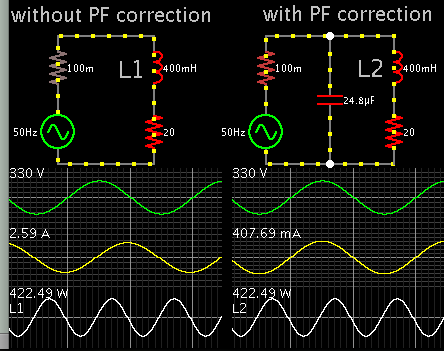T
treez
Guest
Is it true that big companies, who pay for their reactive power draw, can have SMPS's connected to the mains with any low power factor they want, and draw any amplitude of mains harmonics that they want?
Follow along with the video below to see how to install our site as a web app on your home screen.
Note: This feature may not be available in some browsers.
Thanks, but i just wonder if the government really cares about power factor......as long as people pay for their poor power factor.....i mean, there are 100's of millions of <75w smps at work in uk with no pfc.......and you dont hear about the electricity supply system overloading due to it.
Suppose you have a 1KW electric motor(115V@60Hz) and you got permission for 1KW(115V@ 8.7A) usage from government. If your motor PF is 0.8 then your motor will consume 1.2KW(115V@10.4A) power from the distribution system.
Thanks thats interesting, and are you saying that if a power factor corrector were upstream of the motor, then that extra dissipation in the motor cables and motor windings would not happen?As per calculation in my earlier post #5 the excess current of 10.4A (due to poor PFC) will dissipate as I^2R loss on motor wingdings and motor cables
Thanks thats interesting, and are you saying that if a power factor corrector were upstream of the motor, then that extra dissipation in the motor cables and motor windings would not happen?

Thanks thats interesting, and are you saying that if a power factor corrector were upstream of the motor, then that extra dissipation in the motor cables and motor windings would not happen?